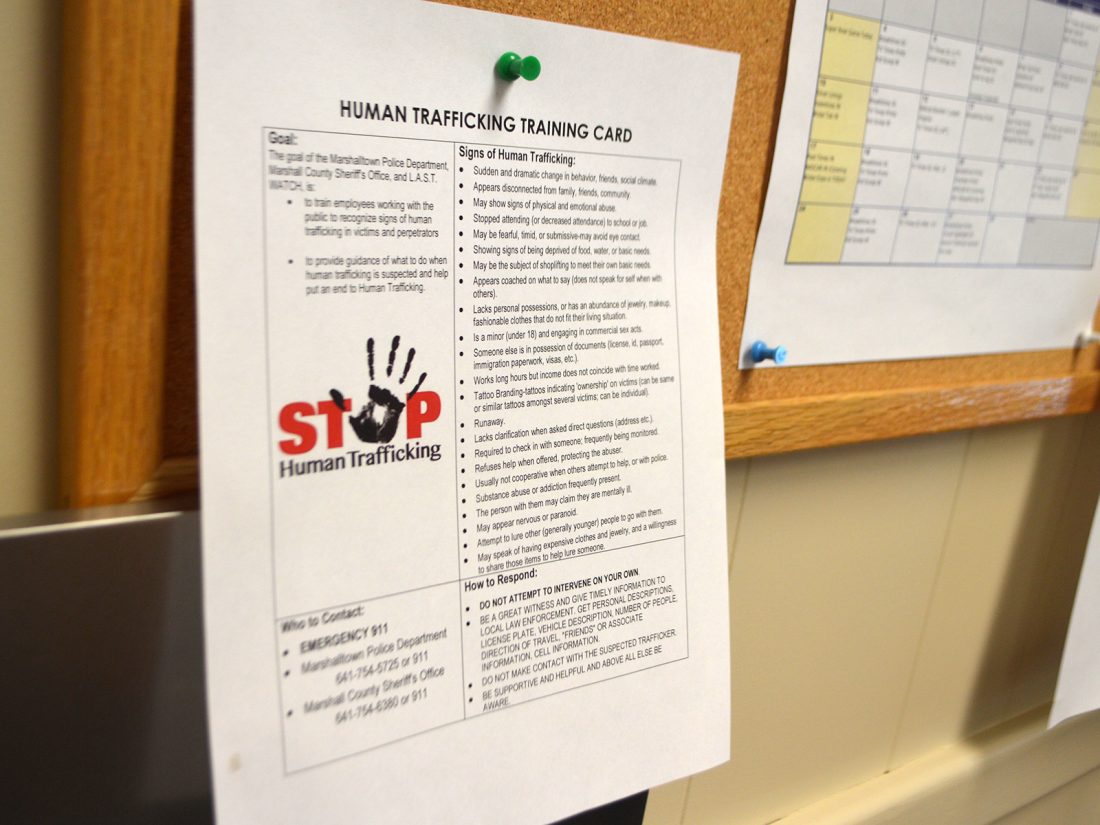January is Human Trafficking Awarness month

January is Human Trafficking Awareness Month. Human trafficking has existed in one form or another since the beginning of time. It is a devastating crime that exists in the shadows of society. This is a vastly under reported crime and a crime which is as difficult to investigate as it can be to detect.
Every year, millions of men, women and children are trafficked around the world, including the United States. Human trafficking is unfortunately a profitable criminal enterprise generating billions of dollars in profit off the backs of vulnerable people. Human trafficking is second only to drug trafficking in terms of profits. When people sell drugs, the drugs are consumed and are then gone. Human traffickers are able to sell their victims repeatedly. Traffickers use physical force, fraud and coercion to lure and force victims into the human trafficking trade. Victims rarely come forward for help for a variety of reasons, including fear and sometimes embarrassment.
According to information taken from the National Child Traumatic Stress Network (NCTSN) website, human trafficking is a form of modern-day slavery. Traffickers profit from the control and exploitation of others.
NCTSN defines human trafficking in two primary forms:
Sex trafficking occurs when people are induced by force, fraud, or coercion into the commercial sex trade against their will. Commercial Sexual Exploitation of Children (CSEC) includes any child involved in commercial sex. Sex traffickers frequently target vulnerable people with histories of abuse and then use violence, threats, lies, false promises, debt bondage or other forms of control and manipulation to keep victims involved in the sex industry. CSEC and sex trafficking exists within the broader commercial sex trade–often at much larger rates than most people realize–and has been found in a variety of venues, including residential brothels, hostess clubs, online escort services, fake massage businesses, strip clubs and street prostitution.
Labor trafficking occurs when people, induced by force, fraud or coercion perform labor or services. Labor traffickers frequently target vulnerable people with histories of abuse and then use violence, threats, lies, false promises, debt bondage or other forms of control and manipulation to keep control over their victims. Child labor trafficking occurs in agriculture, domestic servitude, peddling and sales crews and other service industries, such as restaurants, construction businesses, factories, nail salons, etc. Frequently, children are exploited as part of labor trafficking operations.
Those vulnerable to human trafficking span multiple areas, such as age, socio-economic status, nationality, education-level and gender. Traffickers often prey on people hoping for a better life, lacking employment opportunities, having an unstable home life, or with a history of sexual abuse–conditions present in all spheres of society. Human trafficking victims are found in cities, suburbs and rural areas in all 50 states and in Washington, DC. The most vulnerable populations include undocumented immigrants; runaway and homeless youth; victims of trauma and abuse; refugees and individuals fleeing conflict; and oppressed, marginalized, and impoverished groups and individuals.
Recognizing key indicators of human trafficking is the first step in identifying victims and can help save a life. According to information taken from the U.S. Department of Homeland Security website, common indicators of human trafficking can include the following.
Does the person appear disconnected from family, friends, community organizations, or houses of worship?
Has a child stopped attending school?
Has the person had a sudden or dramatic change in behavior?
Is a juvenile engaged in commercial sex acts?
Is the person disoriented or confused, or showing signs of mental or physical abuse?
Does the person have bruises in various stages of healing?
Is the person fearful, timid, or submissive?
Does the person show signs of having been denied food, water, sleep, or medical care?
Is the person often in the company of someone to whom he or she defers or someone who seems to be in control of the situation, e.g., where they go or who they talk to?
Does the person appear to be coached on what to say?
Is the person living in unsuitable conditions?
Does the person lack personal possessions and appear not to have a stable living situation?
Does the person have freedom of movement? Can the person freely leave where they live? Are there unreasonable security measures?
The Marshalltown Police Department has provided human trafficking awareness training for our police officers. We continue to look for ways to collaborate with community groups and coalitions with a common goal of detecting and combating human trafficking crimes.
If you suspect human trafficking crimes are occurring in Marshalltown, you should call 911 immediately. Do not attempt to confront a suspected trafficker directly or alert a victim to your suspicions. Your safety as well as the victim’s safety is paramount. Much like the crimes of domestic violence and sexual violence, human trafficking crimes cannot be deterred or detected, by law enforcement only. It will take a community effort to bring to light these crimes and their perpetrators. The Marshalltown Police Department encourages our community members to get involved in efforts to combat human trafficking.
If you have questions about this article, or want to learn more about human trafficking in Iowa, please contact Chief of Police Michael W. Tupper via telephone at 641.754-5771 or email at mtupper@marshalltown-ia.gov.
——
Michael Tupper is the Marshalltown Police chief




